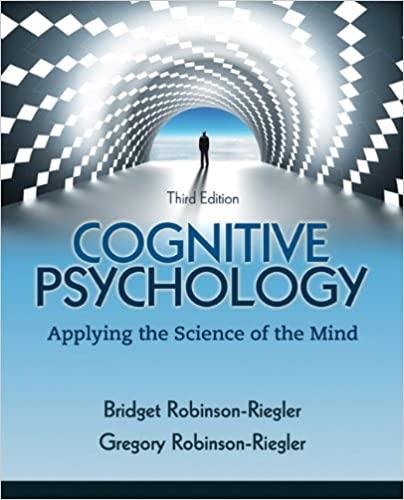Question
1: Many new counselors have anxiety when preparing and delivering lessons for new arrival ELLs, ambiguity when evaluating culturally appropriate supports for ELLs, and uncertainty
1: Many new counselors have anxiety when preparing and delivering lessons for new arrival ELLs, ambiguity when evaluating culturally appropriate supports for ELLs, and uncertainty about "best practices" to support this student population. What do you think school counselors need to know about working with English Language Learners?
2: Consider the following case: Your student Jose, 13, is a predominantly Spanish-speaking student who was placed into special education courses due to the teacher's perspective that Jose is "low-functioning." Special education referral is often determined in this school district through teacher opinion. When testing is done, it is done in English (with assessments created by U.S. citizens, premised on U.S. dominant cultural norms, to determine students' abilities). You have noticed a pattern of similar referrals from this and several other teachers. However, you know that in Jose's home, as the oldest household member with some English skills, he assumes all responsibilities for managing details related to his parents' business, advocating for his parent's rights, and managing bills. Hence, you suspect Jose is experiencing teacher misunderstanding or bias and has been incorrectly placed. First, name four advocacy skills you can use to aid Jose. Write one way you could advocate for change at each of the following levels: (1) micro-level: student level, (2) micro-level: micro-level: systems, and (3) macro-level: public information level. Write a sentence you would use to address the teacher who referred this student directly. Imagine the teacher resisted (very close) to your above intervention, blaming the student for the issue. Explain how you can overcome such resistance from your colleague. Identify the kinds of evidence, including school data, you can use to determine which student groups may be experiencing social injustices in your setting.
3: Discuss the difference between equity and equality
4: What is the difference between advocating for, advocating with, and empowering a student to advocate for self? What is the benefit and disadvantage of each, and how will you know which is best to use?
Step by Step Solution
There are 3 Steps involved in it
Step: 1

Get Instant Access to Expert-Tailored Solutions
See step-by-step solutions with expert insights and AI powered tools for academic success
Step: 2

Step: 3

Ace Your Homework with AI
Get the answers you need in no time with our AI-driven, step-by-step assistance
Get Started


